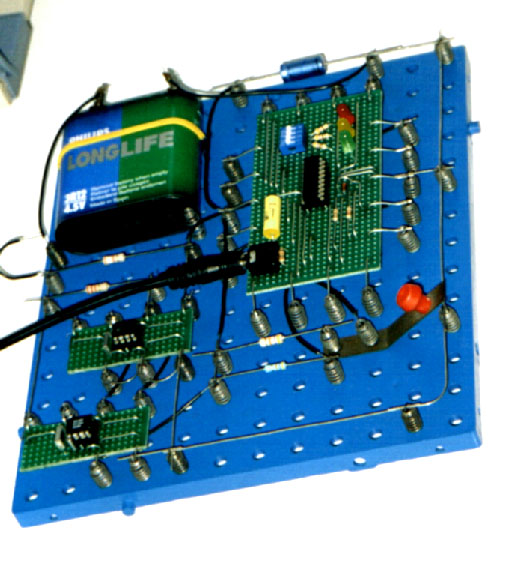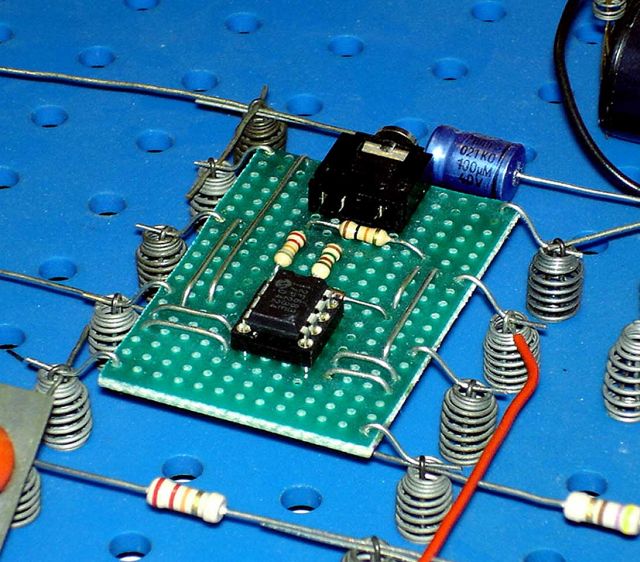

The old and the modern: The Philips EE kits combined with the PICAXE Microcontrollers
Keywords: Philips EE kits, PICAXE Microcontrollers, PICAXE-18X, PICAXE-08M, PICAXE Projects, DS18B20, I2C
Introduction
The PICAXE range of microcontrollers are PIC microcontrollers from Microchip containing a BASIC interpreter and a bootloader, allowing BASIC programmes written on an ordinary PC (using a free programming editor and extensive documentation) to be downloaded via a serial cable and subsequently executed on the PICAXE chip. Although this concept has been implemented on several single-chip microcontrollers, the PICAXE range delivers performance at a very low price, making it a superb system for combined experimentation and education. The main informational sites (linking to other interesting sites) are:
My ten year-old son Joost and I have jointly embarked on a trip (embracing the "Bildungs-ideal") to discover the possibilities of this controller for practical, interesting projects. We use our Philips EE (Electronic Experimentation) system to prototype the designs, and we use the PICAXE-18X chip. At the end of this page a picture of our system is provided.
Site contents on PICAXE information
This site contains the following information on the PICAXE and associated hardware/software:
My implementation and prototyping system


The left picture above (scanned from a photograph) shows a PICAXE-18X board and two I2C boards (24LC256 EEPROM and DS1337 Calendar/Alarm), prototyped using our Philips EE (Electronic Experimentation) system. I designed the boards myself (using standard soldering breadboards, all wiring is done using blank wires); the 18X board contains the enhanced download circuit, a 0.1uF decoupling capacitor, and three LEDs that can be coupled at will to some 18X output pins by an appropriate setting of the DIP switches. The red knob on the front is an input switch that can be read in applications, and the system is powered by a 4.5V battery. Some space is still left for mounting several sensors in parallel like a thermistor, LDR or DS18B20 temperature sensor, and such a configuration was used for most of the experiments mentioned above. Although the Philips EE prototyping system is less eficient with respect to space as compared with breadboards (and the Datalogger Kit), it provides for very stable and secure component and wiring connections through its special spring system, and it supports a high degree of re-use (and thus very low costs) as components do not need to be bended and thus remain in excellent condition for a very long time.
The photograph at the right shows the accompanying PICAXE-08M variant. It too contains the enhanced download circuit. This board is relatively small and thus can be accomodated in many existing Philips EE projects
Contact: ej CURLY_A kranenborg PUNKT org